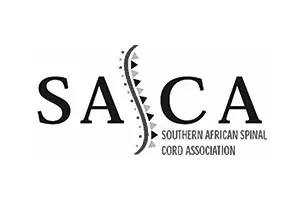Medical Negligence – Laparoscopic Repairs
Laparoscopic Repairs
An inguinal hernia is a defect in the inguinal canal that allows intra abdominal content to herniate (or protrude) through the canal outside of the abdomen (and into the scrotum, in the case of a man).
There are three types of inguinal hernia, namely: (i) an indirect hernia; (ii) adirect hernia; and (iii) a combined (pantaloon) hernia.
The indirect type of hernia is a re-opening of the inguinal canal through which the testes originally migrated in order to reach the scrotum.The testes develop inside the abdomen in the fetus and these then have to migrate downwards to reach the scrotum in early life.
This canal then obliterates but can re-canalize or open up in later life.The majority of inguinal hernias are of this type (i.e. an indirect hernia).A direct hernia is an acquired defect in later life where a direct weakness develops in the floor of the inguinal canal.
Again any intra-abdominal structure can protrude into this defect.The significance and importance of such a herniation is that the protruding structure or organ may be compressed (incarceration) or (in severe cases) it may be strangulated (wl1ere the blood supply is cut off and gangrene will ensue).
Such hernias can be painful due to the entrapment of the hernia sac contents. A hernia can never disappear spontaneously or of its own accord. A hernia will always increase in size and will always become problematic,given enough time. This is one of the main reasons for repair in such hernias.
Clinically, herniation can be subdivided into three groups, namely:
Earlv internal ring defect. This refers to the situation where a patient experiences pain and discomfort in the inguinal canal area without a visible hernia. It occurs not infrequently in sportsmen and is called “Gilmore· s groin”. These people/patients will eventually develop a fully-blown hernia in the course of time and such a hernia is managed just like any other hernia.
Although this is a tension/trauma related matter, most such hernias develop spontaneously with time due to exactly the same mechanisms of pressure and tension on the internal inguinal ring apparatus.
Incomplete indirect inguinal hernia. This refers to the situation where the internal ring is breached but the hernia has not yet reached the scrotum. It is usually the type of hernia where bowel entrapment can occur, because the opening is still quite narrow. Such a hernia will always contain a tongue/protrusion of peritoneum that stretches downwards towards the scrotum.
Complete hernia. This refers to the situation where the canal has opened up so wide that the peritoneal sac/protrusion and abdominal content (such as small bowel) has been able to protrude all the way down to the scrotum. Due to the mechanics of this scenario, this type of hernia develops quickly into a massive hernia with vast abdominal content in the sac around the testicle.
Conventional statistics demonstrate that inguinal hernias develop more on the right than on the left side and the reason for this is not yet clear.
The term: “occult” refers to a hernia that is not detectable upon clinical examination but can be demonstrated to be present during a laparoscopic exam. It also needs to be recorded that the detection of an inguinal hernia is a clinical process and there are no reliable special investigations or tests that
can assist with the diagnosis of such a hernia. Those hernias that can be demonstrated by means of CT tomography should invariably also be detectable clinically.
However, smaller hernias not easily detectable clinically will often not be demonstrated on CT scan examination, either.
The true (gold standard) examination is therefore a laparoscopy one where the inguinal canal, internal ring apparatus and the other pelvic “defect-prone” areas can readily be visualized.
(On this point it needs to be mentioned that one can also detect a femoral hernia, an obturator hernia as well as other types by means of the laparoscopy.)
There are, basically, only two possible approaches to inguinal hernia surgery namely : (i) Conventional “open” surgery; and (ii) Laparoscopic surgery.
In the case of open surgery, an incision is made over the area of the
inguinal canal, in close proximity to the hernia.
The contents of the hernia sac (appendix, small bowel, large bowel, bladder or omentum, as the case might be) are then reduced into the abdomen. The defect is thereafter closed with one of various techniques involving sutures or the placement of a mesh. Where mesh is used, this is placed on top of the inguinal defect and is not in contact with the abdominal cavity and/or bowel at all.
This procedure can be performed under local anaesthetic, with the patient generally being discharged on the same day as the procedure. Only when a patient has been unable to pass urine post-operatively or where there is excessive pain, will such patient be required to stay overnight in hospital.
At the Shouldice Clinic in the United States of America, over 2000 such procedures are performed annually and the aforesaid clinic functions as a day clinic.
Laparoscopic inguinal hernia repair comprises the second option available. This is a procedure where the hernia is patched with a mesh (artificial netting) to cover the internal hernia defect.
For a number of well-argued reasons, this is the preferred method of repair since it is not an “onlay” or outside patch technique but an “inlay” or inside patch technique
A possible analogy is that one would patch the inner tube of a motor car tyre on the inside of the tire rather than on the outside. This certainly holds true for an inguinal hernia as well. There are many good reasons for this but suffice to say that, with a laparoscopic repair, the area where the hernia originates and where the abdominal content protrudes through is patched with a much larger mesh than the defect itself. This can be effected done without any tension and sutures that can migrate, break, tear through tissue et cetera. The cogency of this argument can be confirmed with reference to recurrence rates of the various types of repair.
There are two types of laparoscopic inguinal hernia repair, namely: (i) the TAPP repair; and (ii) the TEP repair. The TAPP is a trans-abdominal pre-peritoneal repair, with placement of a mesh.
This involves entering the peritoneal cavity and cutting away the peritoneum covering the internal ring and the inguinal canal area. An acceptable space is then developed with further dissection of the space and a mesh is placed over the internal inguinal canal opening.
Afterwards, the peritoneum has to be repositioned to its original position in order to cover the mesh. In amplification of the aforegoing, with a TAPP repair, a raw area or surface will always be present (to which bowel can, in theory, adhere and that might, in theory, cause bowel obstruction at a later stage).
The size of the mesh placed with a TAPP repair is usually a 10 x 1Ocm, or smaller, mesh because it is rather difficult to develop a big enough space to place a broader sized mesh.
With the TEP (totally extra-peritoneal repair) the abdomen is not entered during laparoscopy.
The trocars that are used are placed outside the abdominal cavity and during inflation an extra-peritoneal space is developed in the inguinal area.
This allows for extensive dissection; and with proper dissection (as is universally advocated) the whole retro-pubic space is visualized, on both sides. This enables the surgeon to evaluate the other (contralateral) side for early herniation. It also permits the placement of much larger meshes than is possible with a TAPP repair. Usually a 15 x 15cm mesh is placed in this type of repair.
A TEP repair also allows for easy bilateral repair through the same trocar placements and the same incision. The repair of a contra-lateral hernia should not take more than five minutes and adds no real costs other than the price of a second mesh.
One other important factor to take into account is that one cannot easily or readily enter the site/space of a previous TEP repair again and, where a patient later develops a second hernia on the other side, it has to be repaired by means of either a TAPP approach or the conventional open repair described above.
Latest statistics show that the causes and mechanisms for developing an inguinal hernia remain as at present and that such an individual has a 34 – 38% lifetime risk for developing a contra-lateral inguinal hernia.
The current position on objections to the con/arb process
Con/arb process - The Commission for Conciliation, Mediation[...]
Out of time? Think again – The CCMA and its rules
By Lara Keil (Candidate Legal Practitioner) under the[...]
RAF’s lodgement requirements: Claimants further prejudiced
By Lara Keil (Candidate Legal Practitioner) under[...]














